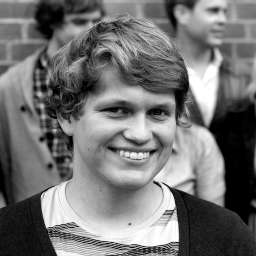The Norwegian Opera and Ballet seems to be developing a thing lately for staging Puccini operas as flashbacks and/or dreams. There is Stefan Herheim’s La bohème from last season, telling the story as part dream, part flashback from the viewpoint of Rodoldo. This season’s Puccini, Madama Butterfly, told the story straight forward, but with an added character, the now-grown son of Cio-Cio San and Pinkerton watching his parents’ relationship unfold, reacting from the sidelines.
The production centred around a single object: Pinkerton’s slide projector. Director Stephen Langridge set the opera in the years following the Second World War, with Pinkerton as an American officer and avid photographer, documenting his stay in Japan. Yet the opera began sometime resembling present times, with Pinkerton and Cio-Cio San’s son, now an old man, walking onstage carrying a wreath in his hands, back from a funeral, presumably his father’s. When he gets inside, he starts rummaging around a desk until he finds his father’s old collection of slides. The music starts as the son turns on the slide projector and starts looking at his father’s old photographs. The rest of the opera is played as a flashback, the son watching his parents’ relationship unfold, although the distinction between what actually happened and what the son imagines soon becomes hazy. The son stays onstage for the duration of the opera, but he mostly stays in the background, reacting to what happens in front of him, although his reactions were never intrusive and never distracted from the main story. There is no real interaction between him and the other characters, except him taking objects out of their hands when they are about to put them away – until at the very end, when Cio-Cio San recognises her son, wraps him in an American flag, gives him a toy airplane and sends him off to play.
In general, the concept of the production worked rather well. The addition of a silent character can prove difficult and annoying, as they can often detract from the action onstage, but here it was successful. The son mostly kept to the background and he did provide the best acting performance of the evening, simply reacting to what happened between his parents. His actions were subtle, although less so as the opera progressed, and his transformation from standing on the outside of the drama to finally becoming a part of it was done very effectively and did not at all seem unnatural.
One moment that especially stood out was the staging of the intermezzo between the second and third acts. In it, Cio-Cio San turns on the slide projector and starts imagining her life in America once Pinkerton comes back for her. Pinkerton and his parents enter the stage, pose for a photo (the one the slide projector is showing), and then enthusiastically greeting Cio-Cio San and taking the child for a stroll. This was one of the most touching moments of the opera, especially when paired with the stellar playing of the orchestra, led by chief conductor Jon Helmer Fiore. The orchestral performance was one of the absolute highpoints of the evening. They played with a large, romantic sound, and there was some very good ensemble playing to be heard.
In the title role on the night I attended (the production is double-cast) was Olga Guryakova. She got off to a rocky start, with an entrance marred by severe intonation problems and a very wide, uncontrolled vibrato. She did, however improve during the night, but she still struggled to rein in her vibrato on high notes, something that was especially apparent during loud sections. Her intonation also suffered noticeably because of this. Yet, during softer parts, she sang quite beautifully at times, especially in the last half of the second act. “Un bel di” received the customary applause, but overall failed to impress.
In terms of acting, her Butterfly was not especially convincing; her movements at times seemed contrived and awkward, and her portrayal of the young geisha was at times incoherent or lacking in nuance. There also seemed to be rather a lot of movement for the sake of movement, and it almost looked like she was afraid of standing still. That is not to say that there were not more successful moments in her performance. Especially her Act II conversation with Sharpless was very good, as was the flower duet with Suzuki.
The rest of the cast was very impressive indeed, delivering well-sung performances. Especially Henrik Engelsviken’s Pinkerton, sung with grace and great beauty of tone, is worthy of mention. His sizeable tenor absolutely did the part justice, and his high notes were very beautiful. Yngve André Søberg’s Sharpless and Ingebjørg Kosmo’s Suzuki were also very good.
All in all, it was a good performance and an exciting concept, with a less than ideal title character but well sung secondary characters, a very good Pinkerton and an orchestra on top form.


